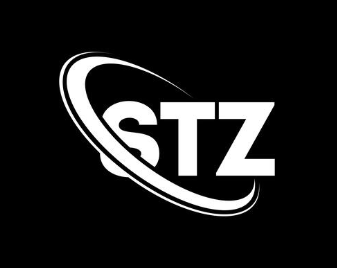One of the standout features of Claude AI is its ability to seamlessly work with different types of files, including documents and images. This functionality opens up numerous possibilities, whether you’re managing complex data sets, reviewing academic papers, or simply experimenting with AI’s potential. By supporting various file formats, Claude enables users to upload, analyze, and interact with their files efficiently and intuitively.
In this guide, we’ll explore What Kind Of Files Does Claude Allow Me To Upload can enhance your experience with the platform. Whether you’re looking to streamline your work, conduct more in-depth research, or explore AI’s capabilities in a new way, understanding the process of uploading files is key to unlocking the full potential of Claude AI. Let’s dive into how to make the most of this feature and why it matters for your AI-driven tasks.
What Files Can You Upload to Claude AI?
Claude AI offers a powerful capability to work with various file types, making it a versatile tool for users needing to upload, process, and analyze documents and media. Here’s a breakdown of the supported file types:
1. PDF (Portable Document Format)
- PDF is ideal for documents that require maintaining their exact layout and formatting. Whether it’s a report, brochure, or an official document, Claude AI can easily extract text and data from PDFs, provided the document is properly formatted.
2. DOCX (Microsoft Word Document)
- DOCX is one of the most commonly used formats for creating word processing documents. Claude AI supports DOCX files, allowing users to upload text-heavy documents that may include embedded images, tables, and other elements without losing their formatting.
3. CSV (Comma-Separated Values)
- For data-heavy tasks, such as analyzing large datasets, CSV files are a key format. Claude AI can read CSV files, making it easier to work with data, perform analysis, and pull out specific insights directly from spreadsheets.
4. TXT (Plain Text File)
- The simplest file type, TXT files, are useful for uploading content without any added formatting. Claude AI can easily process plain text, making it ideal for quick text extraction, note-taking, or simple documents.
5. HTML (HyperText Markup Language)
- HTML is commonly used for web content, and Claude AI can analyze HTML files, extracting the text and understanding the structure of web pages. This is helpful for anyone dealing with web content or needing to extract text from web-based documents.
6. ODT (OpenDocument Text Document)
- As an open standard format, ODT files, often used in open-source word processors, are also supported by Claude AI. Whether you’re using LibreOffice or other similar tools, Claude AI can read and process text from these documents.
7. RTF (Rich Text Format)
- RTF files allow for text formatting like bold, italics, and different fonts and sizes. Claude AI can extract text from RTF documents and maintain most of the formatting, providing flexibility for various content types.
8. EPUB (Electronic Publication)
- EPUB files are widely used for e-books and digital publications. Claude AI supports this format, making it possible to extract text from e-books and other electronic reading materials, even with reflowable content that adjusts to screen size.
9. JSON (JavaScript Object Notation)
- JSON files are used to store and exchange data, often in structured formats. Claude AI can read and analyze JSON files, which are useful for developers or anyone working with structured data from APIs or databases.
10. XLSX (Microsoft Excel Spreadsheet)
Like CSV files, XLSX files are used for storing tabular data in spreadsheets. Claude AI supports XLSX file uploads, allowing for text extraction and data analysis, which is especially useful for tasks involving complex data management and calculations.
Claude AI’s versatility in handling these formats makes it an excellent choice for individuals and businesses needing to work with different types of documents and data. Whether you’re working with text-heavy documents, e-books, spreadsheets, or even code-based files, Claude AI can help extract valuable insights and streamline your workflow.
Step-by-Step Guide: How to Upload Files and Images
Uploading files and images to Claude AI is a simple process that opens up a world of possibilities for interacting with the AI. Whether you’re looking to analyze a document or extract information from an image, Claude AI supports a variety of file types. Here’s a clear, step-by-step guide to help you upload your files and images with ease.
Step 1: Prepare Your Files
Before you begin the upload process, make sure your document or image is ready. Ensure the file is in one of the supported formats (like PDF, DOCX, JPG, PNG, etc.) and check that it meets the platform’s file size and token limits. This step helps ensure the upload goes smoothly without any issues.
Step 2: Access the Upload Interface
Once your file is ready, go to the Claude AI platform. You’ll typically find the upload interface in the area where you normally interact with the AI (such as the input section where you type your query). Look for a button or icon that indicates the option to upload a file or image.
Step 3: Select Your File
Click on the upload option, which will open a file browser. From here, locate the document or image you want to upload. After selecting the file, it will be ready for the next step.
Step 4: Upload the File
After selecting your file, simply confirm the upload. The process will begin automatically, and you’ll see a progress indicator as Claude AI processes the file. Once the upload is complete, Claude AI will analyze the content and be ready to assist you based on the file you uploaded.
Things to Keep in Mind: Upload Limits and Guidelines
When using Claude AI, understanding the platform’s upload limits and guidelines ensures a smoother experience and better interaction with your files. By following the platform’s set restrictions, you can avoid common issues that might hinder performance or delay processing. Here’s what you need to keep in mind:
1. File Size and Token Limits
Claude AI imposes a file size limit to maintain optimal performance. Generally, the platform allows files of up to 30MB per upload, but this can vary depending on the specific model you’re using. It’s important to note that larger files might also encounter token limits, which impact how Claude processes the file’s content. If your document exceeds these limits, you can divide the file into smaller sections to ensure proper handling and prevent delays in processing.
2. Number of Files You Can Upload
For a single upload session, you can typically upload up to 20 files at once when using chat-based uploads. However, keep in mind that file uploads related to project knowledge bases can be unlimited in number, though the total content must fit within Claude’s context window. This allows for extensive document handling, but it’s still essential to manage the total content size carefully.
3. Types of Files Claude AI Supports
Claude AI is versatile in supporting a variety of file types, including documents (PDFs, DOCX), images, and even code files. However, when it comes to processing complex files like PDFs, Claude AI’s capabilities can differ based on the version being used. For instance, if you’re uploading a PDF under 100 pages, Claude can process both the text and visual elements (such as images and charts). If the PDF is larger or requires more intricate text extraction, the platform may limit its functionality to text-only analysis.
4. PDF Processing Specifics
For documents with over 100 pages, Claude AI may restrict processing to text-only, especially if you’re not using the Claude 3.5 Sonnet or Claude 3.7 Sonnet models. This is particularly important when dealing with lengthy research papers, reports, or other sizable documents that require detailed analysis. If you’re working with large PDFs, it’s often advisable to upload them to a Project’s knowledge base, where Claude AI can manage the content more efficiently.
5. Recommendations for Efficient Uploads
To get the best results, always check that your files comply with the size and format restrictions before uploading. For extensive files, break them into smaller, manageable sections to ensure that Claude AI can process them without running into token or size-related issues. This strategy will help you avoid unnecessary delays and ensure that the AI performs optimally.
6. FAQs
Can I Upload PDFs or DOCX Files?
Yes, you can upload a variety of document types to Claude AI, including PDFs and DOCX files. Claude AI is designed to interact with and analyze several document formats to provide more comprehensive insights.
Uploading documents such as PDFs or DOCX files enables Claude AI to extract and process information from these files. This makes it easier for you to work with your text-heavy documents and analyze their contents efficiently. Whether you have a detailed report, research paper, or simple Word file, Claude AI can handle it seamlessly.
What Happens if My File is Too Large?
If your file exceeds the size or token limits, the upload will fail, and you won’t be able to proceed. You can resolve this by splitting the file into smaller parts or compressing it to fit within the allowed limits. Always check the platform’s file size guidelines before uploading.
Can Claude AI Read Text from Images?
Yes, Claude AI can read text from images, but its success depends on a few factors:
- Image Quality: Clear, sharp images improve text extraction. Low-quality images may lead to errors.
- Text Clarity: Simple, high-contrast text is easier for Claude AI to read.
- OCR Technology: Claude AI likely uses OCR, which can struggle with distorted fonts or complex images.








